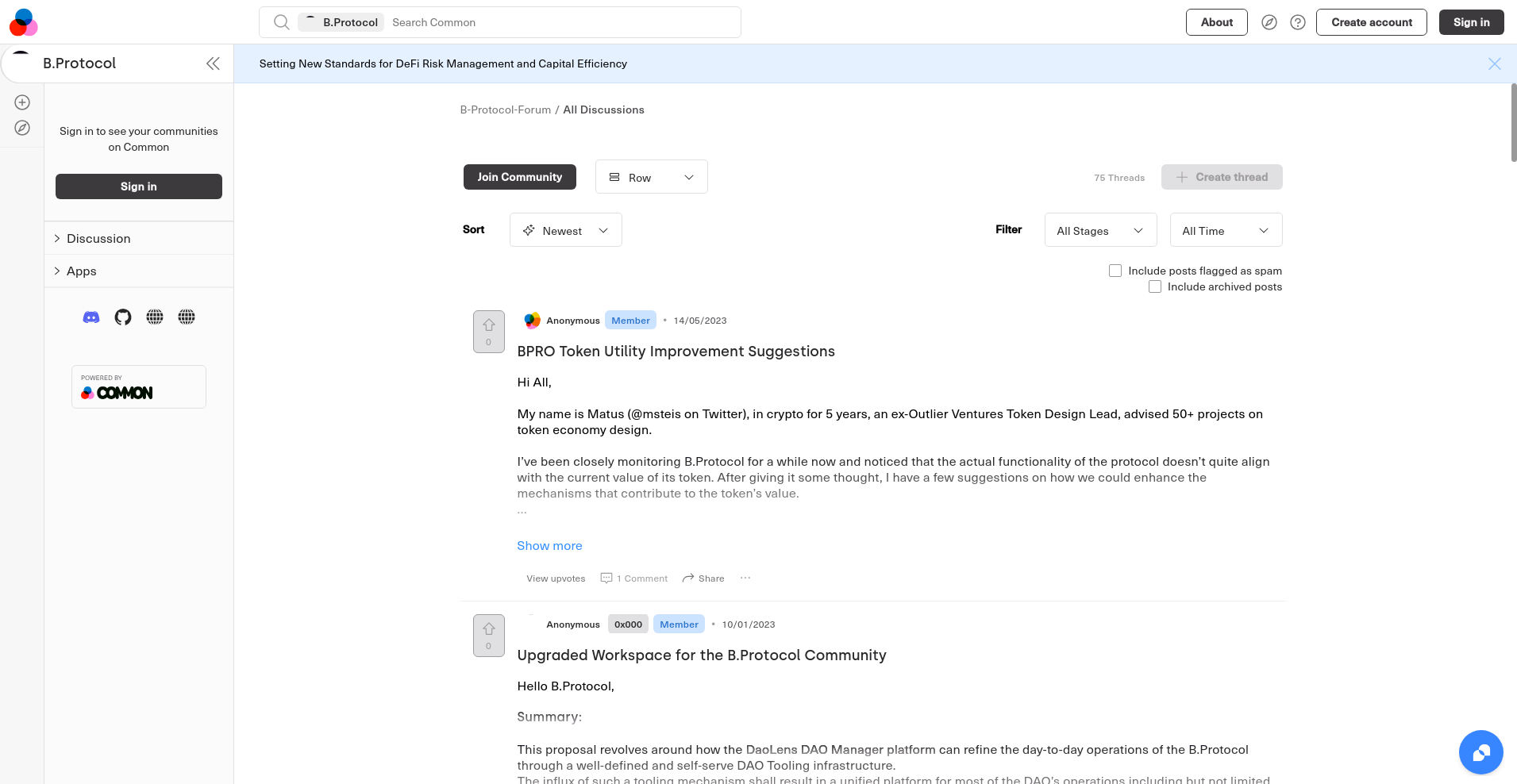B.Protocol ($BPRO) Review: A Data-Driven Look at Its Legitimacy, Technology, and Risks

What Is B.Protocol: An Introduction
B.Protocol is a DeFi ecosystem designed to address core issues in risk management and liquidity in decentralized finance. Its primary mission is to provide transparent, automated solutions for risk assessment, liquidation, and capital efficiency within DeFi platforms. Leveraging a suite of tools including oracles, liquidation engines, and community-driven risk assessments, B.Protocol aims to become a foundational layer for safer DeFi interactions.
Built to serve "risk-aware DeFi players," B.Protocol's offerings include the Risk Oracle, which provides on-chain risk data, and the Backstop Liquidation Engine, which facilitates community-driven liquidations. These components collectively seek to minimize bad debt, eliminate reliance on third-party liquidation services, and promote a more resilient DeFi environment. Given its ambitious scope and multi-product approach, this review provides an impartial analysis of its strengths, vulnerabilities, and long-term viability.
The Team and Vision Behind B.Protocol
Publicly, B.Protocol's developmental and strategic leadership remains mostly anonymous, a common trait among DeFi projects emphasizing decentralization. However, the project aligns itself with experienced community members and institutional backers, including supporters like 1kx, Spartan, and the founder of Bankless. Its community-driven governance, managed via the BPRO token, reflects a democratic approach rooted in collective risk management.
Tracking its roadmap, B.Protocol has achieved significant milestones such as launching its Backstop V2 (BAMM), establishing RiskDAO for risk assessment and management, and developing a decentralized Risk Oracle. Notable milestones include:
- Mid-2020: Founding and initial development of liquidation protocols
- Mid-2021: Launch of Backstop Automated Market Maker (BAMM v2)
- Mid-2022: Establishment of RiskDAO for risk assessment and management
- Early 2023: Development of the Risk Oracle for automated risk data feeds
The project's strategic focus emphasizes automation, decentralization, and community participation. While a robust set of goals indicates clear foresight, the current lack of formal audit reports and transparent leadership raises questions about the team's capacity to fully deliver on their expansive roadmap.
Assessing the Security and Integrity of B.Protocol
This analysis is primarily based on the security audit report from Cer.live, which covers approximately 80% of the project’s codebase and features ongoing bug bounty initiatives. The audit results reveal a generally acceptable security posture but highlight areas warranting caution.
- Audit Status: The platform has undergone audits by reputable firms such as FixedPointSolutions and Solidified. Details are available via their technical documentation links.
- Vulnerabilities: No high-severity vulnerabilities are publicly reported. The audit covers core smart contracts like BAMM and Risk Oracle modules.
- Considerations: The platform's novel components, such as the Risk Oracle and community liquidation pools, introduce complex interactions that could harbor systemic vulnerabilities if not properly managed. Understanding liquidation mechanisms is crucial here.
- Centralization Risks: As with many DeFi protocols, the governance system’s reliance on token-holder voting and potential upgrade mechanisms could be targeted through governance attacks, particularly if control over upgradeability is not sufficiently safeguarded.
Given the limited availability of comprehensive audits—especially on the platform’s core, or any code updates since the last audit—investors should consider this security background as an initial point, emphasizing the importance of ongoing audits before high-stakes deployments or capital commitments.
A Breakdown of B.Protocol Tokenomics
The BPRO token serves as the governance medium for protocol decisions, participation incentives, and collateral in some modules. Its economic model influences both user participation and long-term sustainability. The key metrics include:
- Total Supply: 4,722,737 BPRO tokens, with circulating supply matching total, indicating no existing minting or inflationary mechanisms.
- Market Cap & Price: Approximately $3 million (at $0.6355 per token), with modest trading volume (~$12.49K), suggesting limited liquidity and trading activity.
- Distribution & Vesting: Specific allocations to team, community, or early investors are not clearly disclosed. A lack of clarity raises transparency concerns regarding centralization of voting power or control.
- Utility: Beyond governance, BPRO’s utility includes participation in RiskDAO, proposal voting, and possibly backing liquidation pools.
- Inflation/Deflation: No current mechanisms for inflation or token burning are evident, potentially limiting long-term supply dynamics.
Assessing the economic sustainability, the absence of diverse incentive structures or liquidity provisioning mechanisms could affect bootstrap robustness, making the token more vulnerable to market volatility and speculative trading. Transparency gaps in token distribution further complicate long-term staking or governance engagement prospects.
Assessing B.Protocol's Development and Ecosystem Activity
The project maintains active development, demonstrated by product launches like BAMM V2, and ongoing initiatives into risk assessment models. The active bug bounty indicates a focus on security. The community’s engagement via forums, social channels, and GitHub suggests an ecosystem with some degree of organic growth.
However, the pace appears cautious, with significant development milestones spaced out over nearly a year. While the project claims support from notable DeFi backers and researchers, there is limited evidence of large-scale integrations, user adoption metrics, or real-world deployment of its risk management tools. The ecosystem's current size implies potential for growth, but also indicates that it remains an early-stage experiment with nascent traction.
What Investors Should Know About B.Protocol’s Terms
From the available documentation, there are no explicitly unusual or legally risky clauses highlighted. The platform mentions standard terms and conditions typical of DeFi protocols, including some notices on their GitHub and documentation pages. Nonetheless, the complexity of governance and upgradeability—particularly surrounding multisig controls and permissioned contract upgrades—could conceal back doors or upgrade risks if not transparently managed. The lack of formal legal disclosures or insurance mechanisms further underscores the importance of risk awareness for prospective users.
Final Analysis: The Investment Case for B.Protocol
B.Protocol presents as an innovative, community-driven attempt to overhaul DeFi risk management. Its multi-component architecture—comprising a decentralized risk oracle, liquidity backstop, and risk assessment DAO—addresses critical pain points in DeFi but remains at an early development stage. While audited components and active bug bounty programs suggest a focus on security, the limited scope of audits and the absence of formal insurance or comprehensive governance safeguards pose notable risks.
From an investment perspective, B.PRO’s low market cap and modest trading volume imply high volatility and speculative interest. The project’s utility relies on successful adoption by DeFi protocols and community consensus, which has not yet materialized at a large scale. Its decentralized ethos and open-source nature favor transparency, but the team’s limited disclosures on token distribution and governance controls introduce additional risks.
Strengths
- Innovative Risk Solutions: Combines oracles, liquidation engines, and risk assessments in an integrated ecosystem.
- Active Development & Bug Bounty: Demonstrates awareness of security and ongoing transparency efforts.
- Strong Community and Backers: Supported by notable DeFi entities like 1kx and Bankless founders.
- Multi-Chain Support: Operates across Ethereum, Fantom, Arbitrum, and Polygon, fostering broader reach.
Risks and Weaknesses
- Limited Audit Transparency: Currently only partial audits; no recent comprehensive security assessments documented.
- Market Liquidity & Adoption: Modest trading activity raises questions about real-world utility and token value.
- Tokenomics Vagueness: Lack of detailed distribution, vesting schedules, and governance safeguards.
- Centralization Risks: Potential governance attack vectors if control over upgrade processes is centralized or poorly managed.
- Unproven Adoption: While promising, its ecosystem and product adoption remain speculative pending further deployment.
The decision to engage with B.Protocol should weigh its innovative approach against the current stage of market acceptance and security assurances. For risk-conscious investors, thorough due diligence and ongoing monitoring are recommended before allocating significant capital.

Sarah Wilson
Offensive Security Engineer
I'm a professional "white-hat" hacker. I think like an adversary to find holes in crypto projects before the bad guys do. My job is to break things so you don't get broken.
Similar Projects
-
Yakuza Boss (1-Boss)
Yakuza Boss (1-Boss) Review: Is This Crypto Project a Scam or Legitimate?
-
Skyren
Skyren ($SKYRN) Review: A Deep Dive into Its Tech & Risks
-
Tako Protocol
Tako Protocol Review: Is This Blockchain Social Network a Scam or Legit?
-
Avalon Games
Avalon Games Review: Crypto Scam Checker and Project Scam Review